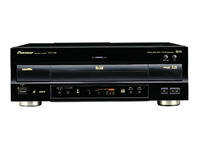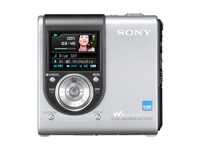![Toshiba HD-EP30 HD DVD player [detail shot]](https://cdn.mos.cms.futurecdn.net/74bbce5456149c83aa914633a35e1b38.jpg)
With news this week that vinyl is the technology that most Brits would like to preserve, we look back at the hi-tech formats we'd like to revive... and another two we wouldn't
1. HD DVD
The first format war of the 21st century has already claimed its first victim - and we’re still mourning its loss. HD DVD was - is - still a vastly superior format to Blu-ray in many respects. From the get-go HD DVD offered the kind of interactive features that Blu-ray is lamely, and belatedly, just getting to now.
Every player ever made had built-in persistent memory and an Ethernet port that not only enabled you to get access to that content, but also made the technology future-proof through firmware upgrades... well at least until Warners’ desertion in January 2008 finally persuaded Toshiba to pull the plug.
Toshiba also did its best to encourage independent movie makers - not the big Hollywood giants - to jump on board, promising a variety of and diversity of content that Blu-ray just couldn’t match.
Early HD DVD discs were also famously superior when it came to picture and sound quality too, with many Blu-ray buyers complaining about poor video and audio encoding, not to mention prematurely corrupted discs.
But the biggest reason to lament HD DVD’s demise is the cost. Right from the start, the simpler, already-established technologies used in HD DVD made the players and discs cheaper to produce and to buy, especially when compared to the Blu-ray opposition.
Get daily insight, inspiration and deals in your inbox
Sign up for breaking news, reviews, opinion, top tech deals, and more.
Given that Blu-ray player prices have actually gone up since HD DVD’s demise, it’s a loss we’ve all ended up paying for.
And remember: just weeks before HD DVD went tits-up, Sony CEO Sir Howard Stringer admitted that he'd wished Sony had patched up its differences with the HD DVD camp - a tacit admission that Blu-ray isn't all it's cracked up to be.
2. Laserdisc

Before Blu-ray, before HD DVD, before even DVD, there was laserdisc, a movie format that first appeared in 1978 and was a cross between CD and vinyl. Laserdisc looked like a CD, it was just 12-inches in size instead of 5-inches, and you could fit most movies on to a double-sided disc.
Laserdisc’s benefits were manifold. For a start it was the only way cinephiles could enjoy decent sound and picture quality at home. The PAL version has 440 lines of resolution, compared to 240 lines for VHS.
Laserdisc was also the only format that could offer Dolby AC-3 surround sound, the precursor to the Dolby Digital Plus, Dolby TrueHD and DTS HD codecs we have today.
Then there’s also laserdisc’s tactile appeal. Like vinyl albums before them, laserdisc movies asked to be cherished, to be held cosseted and caressed; you poring over the sleevenotes while you waited for your laserdisc player to spin into action.
Laserdiscs undoing, of course, was that no-one bloody wanted it. With perfection flaunting them in the face, most punters turned the other cheek and settled for crumbly old VHS instead. It didn’t help of course that laserdiscs were more expensive than VHS, or that Kuro plasma TV maker Pioneer was laserdisc’s only steadfast hardware supporter.
Then came DVD, of course, and it was all over. But imagine if you could team a laserdisc-sized disc with technology advances that we have now.
You could literally cram hundreds of gigabytes on to the thing, making it perfect for use with next-gen Ultra HD technology.

3. MiniDisc
Before iPods, MP3 players and all that nonsense, Sony touted MiniDisc as a true alternative to Philips decrepit Compact Cassette.